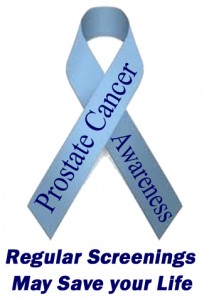All men want a healthy prostate. Yet many men ignore, or simply do not recognize, the signals that there may be a problem. A man’s prostate gland is the control center for both urination and seminary emissions (ejaculations). Of course every man wants the best prostate health.
Foods That Help You Get the Best Prostate Health
The number one thing that experts agree upon is that you need to develop a healthy eating pattern. There is no way that a specific list of foods is a magic bullet that will save you. It’s about healthy choices made regularly.
- Choose to eat five fruits and vegetables daily. The Mayo Clinic suggests that you choose vegetables that are high in vitamin C. These include: bell peppers, broccoli, Brussels sprouts, kohlrabi, snow or snap peas, cauliflower, kale, and tomatoes.
- Choose whole-grain, soy free bread instead of white bread. The same is true for any pasta and cereals. They should be whole-grain and soy free.
- Restrict and limit eating red meats. This includes beef, pork, and lamb. It is best to avoid processed meats (lunch meats and hot dogs).
- The best choice for proteins would be fish, skinless chicken (or poultry), beans and eggs.
- Choose healthy fats like olive oil, and for cooking choose grape seed or avocado oil. (Avoid Canola oil which is GMO and could be sprayed with RoundUp [glyphosate]) Other healthy fats include nuts in your diet.
- Avoid fast food as these are high in trans fats (partially hydrogenated fats). This is common in packaged foods.
- Limit and reduce consumption of dairy (milk) and other animal products as these contain saturated fats.
- Sweets should be very limited and reduced to special occasions. This includes all sugar sweetened sodas and fruit juices. Also it is best to eliminate HFC (high frutose corn syrup) from your diet. Many salad dressings and condiments contain HFC. Look for ones that do not typically “organic”.
- Reduce and restrict salt. Choose low sodium options. Many canned, processed, and frozen foods may contain excessive salt.
- Eat slowly and watch portion sizes.
Exercise Can Help You Improve Prostate Health
Very few studies have looked at exercise and it’s impact on the prostate. However the few studies that have been completed suggest that regular physical activity is good for the prostate gland. Most men start to have prostate problems around the age of 50. The follow-up studies performed at Harvard have shown that men who were more physically active were less likely to suffer from BPH (enlarged prostate).
BPH (Enlarged Prostate)
The study demonstrated that even low to moderate physical activity helped to prevent BPH. The minimal activity intensity was walking regularly at a moderate pace.
Prostatitis (Inflammation of the Prostate)
A randomized, controlled clinical trial in Italy was performed on men diagnosed with chronic prostatitis. The study compared one group of men who did aerobic exercise (this group walked briskly three times a week). The other group did non-aerobic exercise (leg lifts, sit ups, and stretching three times a week). After 18 weeks both groups reported feeling better. However the aerobic exercise group experienced less pain from prostatitis, less anxiety, and less depression. In comparison the group that walked briskly three times a week had a better quality of life.
Prostate Cancer
One study looked at 1,400 men diagnosed with early-stage prostate cancer. The study found a 57% reduction in the progression of prostate cancer when the men did aerobic exercise (walked briskly) a minimum of three hours per week. Men who walked leisurely and not as much were not as fortunate. In a follow-up study, men with prostate cancer that exercised vigorously more than three hours/week reduced their chance of dying from the prostate cancer by 61%. Men who exercised just as vigorously for less than one hour/week did not realize the same benefit.
Before starting any exercise program consult your healthcare provider or physician.
How to Recognize a Prostate Problem
Prostate problems can occur at any age. Most guys believe that it only happens to men over 50 years of age. Identifying prostate problems early can reduce more serious prostate problems. It is important to familiarize yourself with these signs (symptoms) and that you consult your healthcare provider or your doctor.
Symptoms
Common symptoms include: frequent urination; painful urination; blood in your urine; reduced flow or dribbling when you urinate. A serious symptom is inability to urinate. If you notice pain with an ejaculation this is also a symptom. Back pain, pain in your hips or thighs, or pain in your pelvis or rectum could be signs of a prostate problem.
Sometimes prostate problems are not obvious and individuals may have a fever, chills, or lower back pain. Pains in the pelvic floor area or in the abdominal area above the pubic bone may also indicate a prostate problem. If you experience pain and burning when you urinate, or you have difficulty urinating, you have symptoms.
Medical Help is Essential
It is extremely important to urinate. If you are unable to urinate seek immediate medical attention. This can prevent renal (kidney) failure. If you have any of the above symptoms discuss them with your doctor. It is dangerous to put off or postpone seeking medical attention under any circumstance.
An Ounce of Prevention is Worth a Pound of Cure
Men should see a physician regularly (yearly) and when they have a health concern. There is no substitute for a physical to ensure good health. If you under 50 and suspect you have a prostate problem it is important to tell your physician. Most physicians do not expect a younger man to have a prostate problem. Your mention of a problem could save valuable time in getting to a diagnosis. Men should and must realize that going to doctor early can save their life. The major reason that colon cancer is one of the leading causes of death in men is because it is not diagnosed or discovered early.
Can Taking Dietary Supplements Help Me?
Dietary (food) supplements can support good prostate health.* They cannot cure, treat, or prevent a diagnosed or undiagnosed prostate disease or illness. If you use natural prostate remedies the ingredients should have some published clinical data to support your use. You can confirm information about ingredients at NIH.gov (National Institute of Health) website. In the “search” area enter the ingredient and then what it is good for (ex. enlarged prostate). When you perform the search any related studies would be listed below. Be sure to look at the titles of the articles. Click on the articles to learn more. By educating yourself you can ensure best prostate health.
This is a Sponsored Article
This article is sponsored by IMS Supplements, Inc. the maker of Best Prostate ®. IMS Supplements, Inc. owns the following websites:
https://www.bestprostate.com , https://www.bestprostateformula.com , https://www.naturalprostateformula.com , https://www.bestprostatereview.com , https://www.naturalprostateremedies.com , https://www.bestprostatehealth.com , https://www.wellnessinhealth.com , https://www.nutri-dog.com , https://www.mejorprostata.com , https://www.quick2sleep.com



